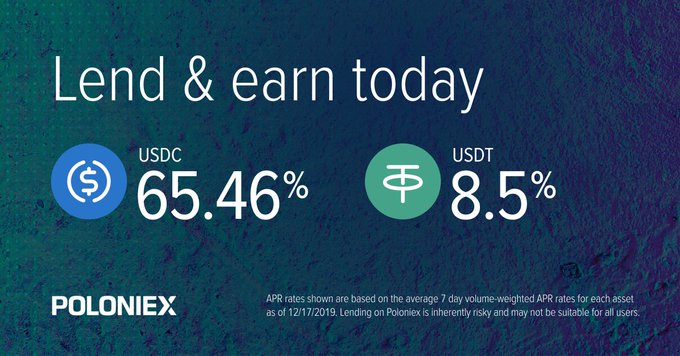2021-10-13 21:44 |
Celsius vs. Hodlnaut is an interesting comparison between two internationally headquartered crypto interest products. Both platforms allow cryptocurrency holders to earn a relatively passive yield on their digital assets.
The following review explores the differences between both platforms, examining security, APY offerings, community trust, and customer service.
Celsius is a UK-based company headquartered in London. A crypto veteran, Celsius launched in 2017 and has over $24.3B in assets under its management from over 1 million users.
Celsius is unique in that it distributes 80% of its revenue to its community via rewards for users who hold its native token, CEL. Rewards vary based on the amount of CEL users hold. Holders also enjoy the benefit of earning more interest on their tokens; however, this feature isn’t available for U.S. customers, yet. The platform is accessible via web and mobile apps on Android and iOS.
Celsius supports 40+ assets, including BTC, ETH, USDC, GUSD, PAXG, LINK, and LTC. Users can earn up to 6.20% APY on BTC, up to 5.35% APY on ETH, 3% on LINK, and 4.08% on LTC. Users also earn 8.88% APY on stablecoins like USDC and GUSD.
Hodlnaut is a Singaporean-headquartered crypto interest provider and is a comparatively newer company. It launched in 2019 and has $500M+ in assets under management over 10K users.
Hodlnaut supports six assets; BTC, WBTC, ETH, USDC, USDT, and DAI. Users can earn up to 7.46% on BTC, WBTC, and ETH; up to 8.32% on DAI; and 12.73% on USDC and USDT. The Hodlnaut platform is accessible via web and iOS apps. As of this writing, Hodlnaut is not available on Android.
Celsius and Hodlnaut have unique advantages, so let’s explore which platform is the better cryptocurrency interest account for you.
Celsius vs. Hodlnaut: Key Information Item Celsius HodlnautLocation
London
Singapore
Beginner-Friendly
Yes
Yes
Mobile App
Yes, on Android and iOS
Yes, on iOS
Available Cryptocurrencies
BTC, ETH, LTC, GUSD, 30+ others
BTC, WBTC, ETH, USDC, USDT, and DAI
Company Launch
2017
2019
Community Trust
Great
Great
Security
Great
Great
Customer Support
Great
Good
Fees
Very Low
Low
Reviews
Read our Celsius review
Read our Hodlnaut review
Site/Promotions and Signup Bonuses
Earn up to $50 by signing up for a Celsius account.
Earn up to $20 when you sign up for a Hodlnaut and deposit up to $1000.
Feature #1: Interest Rates — Who Has Better APY, Celsius or Hodlnaut? BitcoinCelsius and Hodlnaut offer tiered rates on Bitcoin, meaning your APY drops off after a certain threshold of assets held.
On Celsius, users earn:
6.20% on 0 – 1 BTC 3.51% on >1 BTCHodlnaut rates are notably higher:
7.46% on <2 BTC 4.08% on <8 BTC 2.02% on <90 BTC 1% on 100+ BTCCelsius’s rates on Bitcoin and Ether:
Hodlnaut’s interest rates:
EthereumCelsius offers:
5.35% on 0 – 1 ETH 5.05% on >1 ETHAgain, Hodlnaut’s APY offerings are substantially better. Users earn:
7.46% on <20 ETH 4.08% on <80 ETH 2.02% on 100+ ETH StablecoinsWhere Hodlnaut offers tiered rates on three stablecoins, Celsius offers fixed rates on over ten stablecoins.
Hodlnaut’s rates on USDC:
12.73% on 0 – 25,000 USDC 7.25% on 25,000 – 100,000 USDC 3.56% on 100,000 – 500,000 USDC 2.80% on 500,000+ USDCHodlnaut’s rates on USDT:
12.73% on 0 – 25,000 USDT 7.25% on 25,000 – 100,000 USDT 4.60% on 100,000 – 500,000 USDT 3.04% on 500,000+ USDTHodlnaut’s rates on DAI:
8.32% on 0 – 25,000 USDC 5.12% on 25,000 – 100,000 USDC 3.56% on 100,000 – 500,000 USDC 2.02% on 500,000+ USDCCelsius’s stablecoin rates for U.S. users are 8.8% APY on TUSD, GUSD, PAX, USDC, USDT ERC20, TGBP, TAUD, THKD, TCAD, BUSD, ZUSD, and 4.60% on MCDAI.
If they receive their interest in CEL, international users can earn up to 11.21% APY (instead of 8.88%) and up to 5.78% APY on MCDAI.
Winner: Hodlnaut offers more competitive rates across the board with more lenient limits. However, there aren’t as many assets to choose from, so Celsius earns some significant points for its extensive selection of supported assets. For example, Celsius offers yield on DeFi tokens like AAVE and Compound.
How Do Celsius and Hodlnaut Make Money?The standard cryptocurrency interest account model is lending user deposits at a higher rate than it pays depositors, making a profit on the margin. Most companies usually lend assets to institutional or commercial creditors, although they don’t usually disclose in detail who the borrowing parties are.
Celsius claims to loan to both commercial and institutional borrowers. Hodlnaut claims to only loan to institutions, as well as through lending to decentralized protocols.
Hodlnaut outlines its borrower vetting process:
Comments to CoinCentral in our Hodlnaut interview.
Celsius and Hodlnaut are both based outside the U.S., so readers may find themselves at a lack of familiarity with the regulations the companies primarily adhere to.
Cryptocurrency assets held in Celsius and Hodlnaut are not FDIC insured, which is typical for most cryptocurrency products. Funds held in Celsius and Hodlnaut (or any other cryptocurrency account) are never entirely risk-free.
Both Celsius and Hodlnaut require creditors to post collateral to combat the risk of borrower defaults. Users must hold assets at least twice the value of their loan amount to qualify for a loan. Celsius and Hodlnaut require a minimum of 50% LTV for borrowers, going up to 150% on Celsius and 70% on Hodlnaut.
Here are Celsius’ procedures in the case of a borrower default:
Hodlnaut’s procedures for borrower defaults:
Feature #2: Payouts and WithdrawalsOn Celsius, withdrawals above $150,000 can take up to 48 hours to be released, as they are processed manually. Celsius also has a $600,000 withdrawal limit per 24 hours. The company does not charge withdrawal, origination, transfer, deposit, or other fees, and users can withdraw their assets at any time.
Hodlnaut also lets its users withdraw at any time, but has a withdrawal limit of 100 BTC daily for accounts that have completed KYC verification. Hodlnaut charges withdrawal fees depending on the asset. Here’s a breakdown:
Interest is compounded each Monday on both Celsius and Hodlnaut.
Winner: Celsius. With zero fees across the board, Celsius wins in this category.
Feature #3: Celsius vs. Hodlnaut SecurityPlatform Safety
Celsius has a slew of user-facing security features to ensure its platform is safe from hacks, such as pin requirements, 2-factor authentication, biometric security, and additional opt-in features like email verification when changing your wallet address, an address whitelisting feature, and manual verification when attempting to withdraw assets worth over $150,000.
Another handy safety feature is Celsius’ HODL mode, an opt-in feature where users must go through a 24-hour waiting period before any withdrawals are confirmed, which gives Celsius more time to respond if your account has been hacked.
Holdnaut’s security features include 2-factor authentication, a pin and biometric authentication. The platform also has a safelisting feature that permits withdrawals to a list of known wallet addresses only.
Fund Safety
Celsius’ custodians are Fireblocks and PrimeTrust, which keep user assets in a mix of cold storage and insured hot wallets. While Fireblocks provides some insurance on digital assets, it does not cover assets when they are loaned and leave Celsius to generate yield.
In April 2021, Celsius’ email distribution servers were hacked. Malicious actors gained access to the contact info of some users and performed an email and SMS phishing attack leading to the loss of some users’ funds.
Following the attack, CEO Alex Mashinsky stated, “We have always communicated to our customers and will continue to reinforce that Celsius will never ask for passwords, private keys, seed phrases, and other confidential user credentials.”
Hodlnaut’s primary custodian is Fireblocks, so user assets are again stored in a mix of offline cold storage and insured hot wallets. Fireblocks claims to ensure that the entirety of a given user’s deposit is never in the same place at once.
This is through a partnership with Nexus Mutual, which lets Hodlnaut insure user assets even after they are deployed to earn yield. That’s big for the crypto space, as most platforms have not offered similar insurance options. Currently, Hodlnaut’s insurance with Nexus caps at $22M, which sounds good in theory, but it is only about 4.4% of the platform’s total assets under management.
As of this writing, Hodlnaut has never been hacked.
Winner: It’s a close race. Both platforms have industry-standard protection, and while Celsius’s HODL feature gives its users more options to protect themselves against a hack, Hodlnaut’s optional insurance cover allows them to further secure their funds. However, Hodlnaut wins in this category for its industry-leading insurance options.
Feature #4: Celsius vs. Hodlnaut Ease of UseBoth Celsius and Hodlnaut are beginner-friendly. While Celsius is accessible via web, Android, and iOS apps, Hodlnaut’s platform is available via web and its iOS application, which was released mid-2021.
Winner: Celsius gives users the option to manage their assets on the go via apps or get a broader view of their crypto portfolio with a web app. On the other hand, Hodlnaut users on Android can only access the platform through its web app.
Celsius and Hodlnaut Bonuses and Standout FeaturesWith HODL mode, Celsius lets users disable any outgoing activity on their account, helping users double their protection if they know they won’t be withdrawing for some time. CelPay, another inbuilt feature, allows users to make purchases by transferring crypto from their accounts.
Hodlnaut’s TokenSwap is a handy tool that lets users exchange currencies directly in the app. It lets users convert BTC to ETH or USDC to BTC, wrap and unwrap their BTC, and more.
CoinCentral readers can earn up to $50 in BTC when they sign up to Celsius or up to $20 when they sign up for a Hodlnaut and deposit up to $1000.
Customer ServiceCelsius’ dedicated Help Center contains FAQs on most questions a new user would have, and allows users to submit a help request and receive support via email.
Hodlnaut maintains an FAQ section on its website, and users can access prompt support by creating a support ticket or contacting [email protected].
The Court of Public Opinion: Celsius vs. Hodlnaut RedditReddit reviews of Celsius are largely supportive, citing its security features, regular AMAs with CEO Alex Machinsky, and rewards as positives.
Celsius review by u/PolarBearToenails99
Hodlnaut users on Reddit are largely appreciative of the platform’s industry-leading interest rates and the speed and accessibility of support.
Hodlnaut review by u/blahblahflyhighhigh
Celsius vs. Hodlnaut Review Final Thoughts: Which is The Better Crypto Interest Account?The best way to view the Celsius vs. Hodlnaut comparison is by understanding how Hodlnaut fits into the current cryptocurrency interest account landscape.
Celsius has been around since 2017 and has gathered an AUM of $24.3B and over a million users– Hodlnaut is newer and only has a fraction. However, the reason a comparison like Celsius vs. Hodlnaut is being made is because of Hodlnaut’s positioning in a rapidly growing market.
Hodlnaut offers some of the industry’s highest rates; up to 7.46% APY on BTC and ETH and up to 12.73% on stablecoins like USDC and USDT. Compared to Celsius on rates alone ( 6.20% APY on BTC, up to 5.35% on ETH, up to 8.88% on stablecoins), Hodlnaut is the better option.
However, Celsius makes for a better crypto interest account due to its reputation and longevity in the industry– something Hodlnaut surely aspires to attain in the coming decade. Celsius takes the cake for a few more reasons:
Its Earn in ELl option allows users to earn more. It does not charge any fees. It supports 40+ assets. Hodlnaut currently only supports six tokens – not a lot compared to Celsius’ 40+ supported assets.Hodlnaut users leave positive reviews of its support and customer service, and the company’s optional insurance cover through Nexus Mutual is an industry trend we hope to see more of.
However, users who want to take advantage of both Hodlnaut’s higher interest rates and Celsius’ wider range of assets might choose to diversify by holding <2 BTC at 7.46% APY in Hodlnaut, and one or less BTC on Celsius, or a similarly beneficial mix.
We advise that users perform their own research into these platforms and determine the risks themselves.
CoinCentral readers can get up to $50 when they sign up for a Celsius account, or up to $20 by signing up for and depositing $1000 into a Hodlnaut account.
For a deeper dive, check out our individual Celsius and Hodlnaut reviews.
The post Celsius vs. Hodlnaut: Which is the Better Crypto Interest Account? appeared first on CoinCentral.
origin »Emerald Crypto (EMD) íà Currencies.ru
|
|



















